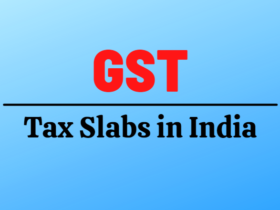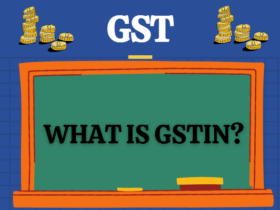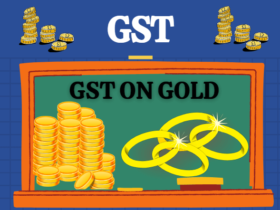What is TDS -Tax Deducted at Source? TDS or tax deducted at the source is a mechanism of income tax deducting at the source of taxable income.
TDS or tax deduction at the source of the income tax deducted from the time of payment of specified payments such as rent, commission, professional fee, salary, interest, etc. by such paying persons. Generally, the person receiving the income is liable to pay income tax.
But the government has made sure that income tax already deducted from the payments you are making. With the help of deduction tax on source provisions.
The person receiving the income gets the net amount (after deducting TDS). The recipient will add the gross amount to his income and the TDS amount will be adjusted against his final tax liability.
The recipient takes the credit for the amount already deducted and paid on his behalf.
Due to the proliferation of COVID-19 in the country. The Government of India announced on 13 May 2020 a relief package called ma Atma Nirbhar Relief Package.
In this package, one point covered TDS rate cuts for different types of payments. . The benefit declared in the Atma Nirbhar package is applicable only to resident Indians.
READ ALSO : What is an Income Tax Refund?
When should TDS be deducted and by whom?
Under the Income Tax Act, any person making a specified payment required to deduct TDS at the time of making such specified payment.
But if there a paying person or HUF who does not need to get the books audited. Then no TDS should be deducted.
However, in case of payment of rent in excess of Rs 50,000 per month by individuals and HUFs. It is necessary to deduct TDS @ 5% even if the individual or HUF is not liable for a tax audit. Further, individuals and HUFs who are not applying for TAN are liable for a deduction of TDS @ 5%.
Your employer deducts TDS applicable to income tax slab rates. Banks deduct TDS @ 10%. Or they can deduct 20% if your PAN is not known.
The TDS rates for most payments stipulated in the Income Tax Act and TDS paid on the basis of these specified rates.
If you submit investment proof (to claim the deduction) to your employer and your total taxable income is less than the taxable limit – you will not have to pay any tax. And therefore no TDS should be deducted from your income.
Similarly, if you are below your total income taxable limit. You can submit Form 15G and Form 15H to the bank so that they do not deduct TDS on your interest income.
If you have not been able to produce proof to your employer or if your employer or bank has already deducted TDS and your total income is less than the taxable limit) – then you can file the return and claim the refund of this TDS. Can. Complete list of specified payments eligible for TDS deduction along with TDS rate.
How and When to file TDS returns?
Tax deductions filed in source returns are compulsory for all persons who have deducted TDS. TDS returns are to be submitted quarterly and various details such as TAN, amount of TDS deducted, type of payment, PAN of deduction, etc. have to be submitted.
Further, different forms are prescribed for filing returns depending on the purpose of deduction of TDS.
Various types of return forms are as follows: Form 26QTDS on all payments except salaries Q1 – 31st July Q2 – 31st October Q3 – 31st January Q4 – 31st May
| Form No | Transactions reported in the return | Due date |
|---|---|---|
| Form 24Q | TDS on Salary | Q1 – 31st July Q2 – 31st October Q3 – 31st January Q4 – 31st May |
| Form 27Q | TDS on all payments made to non-residents except salaries | Q1 – 31st July Q2 – 31st October Q3 – 31st January Q4 – 31st May |
| Form 26QB | TDS on sale of property | 30 days from the end of the month in which TDS is deducted |
| Form 26QC | TDS on rent | 30 days from the end of the month in which TDS is deducted |
READ ALSO : What are Income Tax Slabs in India?
Types of TDS
Note: 2 new sections (194K & 194-O) have been added to Income Tax Act by FM Nirmala Sitharaman in Union Budget 2020.
Section 194K has introduced TDS on dividend income from shares and mutual fund units by putting an end to Dividend Distribution Tax (DDT).
Further section 194-O has introduced TDS at 1% for the sale of goods and services by an e-commerce participant facilitated by an e-commerce operator.
Given below are some sources of income which are subject to tax deduction in source (TDS):
- Salary – Payment from employer to employee
- Interest on securities
- Interest excluding interest on securities
- Prize money from winning games like a crossword puzzle, card, lottery, etc.
- Contractor payments
- Insurance Commission
- LIC maturity amount
- Brokerage or commission
- Transfer of immovable property
- Compensation on acquiring immovable property
- Payment of rent
- Commission payments
- Interest on bank deposits
- Remuneration paid to the director of the company, etc.
What is a TDS certificate?
Form 16, Form 16A, Form 16B, and Form 16C are all TDS certificates. The TDS certificate should be issued by someone who is deducting TDS from whom TDS was deducted from the payment.
For example, banks issue Form 16A to the depositor when TDS is deducted on interest from fixed deposits. Form 16 is issued by the employer to the employee.
| Form | Certificate of | Frequency | Due date |
|---|---|---|---|
| Form 16 | TDS on salary payment | Yearly | 31st May |
| Form 16 A | TDS on non-salary payments | Quarterly | 15 days from due date of filing return |
| Form 16 B | TDS on sale of property | Every transaction | 15 days from due date of filing return |
| Form 16 C | TDS on rent | Every transaction | 15 days from due date of filing return |
Points to Remember Before Deducting TDS
- Section 192 to 194L of the Income Tax Act can refer to the complete list of expenses and sources of income under TDS.
- If an individual does not fall under the income tax slab, he or she can furnish Form 15G or Form 15H to the deductor as a declaration in advance for non-deduction of tax at source.
- Form 15H is for senior citizens.
- Form 15G is for all other individuals.
- TDS is applicable to each type of income beyond a certain limit.
- TDS deducted as per the income tax slab rate for salaried individuals.
- For other deductees, TDS deducted at the specified percentage for each income type.
READ ALSO : How to file Income Tax Returns online
TDS credits in Form 26AS
It was important to understand how TDS linked to your PAN. The TDS deduction linked to the PAN numbers for both the deductor and the deductor.
If TDS has deducted from any of your income then you will have to go through the Tax Credit Form 26AS. This form is a consolidated tax statement available to all PAN holders.
Since all TDS linked to your PAN, this form lists the details of TDS deducted in your income by each deductor for all types of payments you make – whether they are salary or interest income – on your PAN. All TDS linked to having reported.
In this form, you also pay income tax directly – in the form of advance tax or self-assessment tax. Therefore, it becomes important for you to mention your PAN correctly, wherever TDS may apply to your income.
SMS Alerts for Higher Transparency
The Income Tax Department is sending an SMS to the taxpayers from VK-ITDFL mentioning the amount deducted at source (TDS) against the taxpayer’s PAN (Permanent Account Number).
SMS alert will give you information about TDS deposited in respect of your income from salary, interest, etc. every quarter.
The TDS amount for the respective financial year will be deposited in your Form 26AS. This initiative was implemented by the Ministry of Finance to increase transparency and reduce cases of TDS mismatch at the time of filing income tax.
Taxpayers can cross-check the information given in the SMS with the information on the Parliament to ensure that there is no mismatch. TDS mismatch can be a common reason for filing an incorrect income tax return.
Advantages of Tax deducted at source (TDS)
- It helps to prevent tax evasion.
- As TDS deductions take place throughout the financial year, it’s an effective mode of revenue inflow to the government.
- It widens the tax collection base.
- It is a way to share the responsibility of tax collection between the government and the deductors.
TDS is not applicable in the following cases:
- When the amount paid to the government or any government body and Reserve Bank of India.
- The amount paid to notified mutual funds under Section 10(23D).
- When deductee has a certificate of no-deduction under Section 192 of the Income Tax Act.
- When the amount paid to state or central financial corporations.
- Banks or Banking Company
- Life Insurance Corporation, Unit Trust of India, or any other insurance company
- National Savings Certificate
- Kisan Vikas Patra
- Non-Resident External Account
- Banking Co-operative society
- Savings account and Recurring deposits of banks and co-operative society
- Notified body for non-deduction of tax
READ ALSO : Important terms of Income Tax return and Benefits of Taxes
READ ALSO : What is Income Tax meaning? Different Types in India









